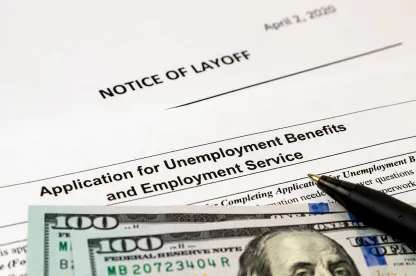As we previously reported, on Monday, April 27, 2020, Texas Governor Greg Abbott announced Phase One of his much-anticipated plan to reopen Texas while minimizing the spread of COVID-19. In response to this plan to reopen, at limited capacity, retail establishments, restaurants, movies, shopping malls, libraries and museums, starting on May 1, 2020, many Texas workers are weighing the option of returning to work and earning a paycheck against the potential risks of exposure to COVID-19 and forfeiting unemployment benefits.
On Thursday, April 30, 2020 Governor Abbot addressed this issue by announcing that the Texas Workforce Commission (“TWC”) has issued Guidance to unemployment benefits claimants concerning their continued eligibility should they choose not to return to work. While reinforcing that each claim is assessed on a case-by-case basis, the TWC Guidance outlines specific circumstances under which workers will still be granted unemployment benefits, even if suitable work is available.
Per the Guidance, a worker who refuses to return to work due to the following COVD-19 related reasons may retain unemployment benefit eligibility:
-
High Risk—If a worker is at “high risk.” defined by the TWC as individuals 65 years and older, as they are at higher risk for becoming very sick from COVID-19;
-
Household Member at High Risk—If a worker’s household member is at high risk. This includes household members 65 years or older;
-
Diagnosed with COVID-19—If a worker has been diagnosed with COVID-19, having tested positive for the virus by a source that is authorized by the State of Texas, and they have yet to recover;
-
Household Member Diagnosed with COVID-19—If a worker has a household family member with COVID-19, having tested positive for the virus by a source that is authorized by the State of Texas, the family member yet to recover, and 14 days have not yet passed;
-
Quarantined—If a worker is currently in 14-day quarantine due to close contact exposure to COVID-19; or
-
Childcare Needs—If a worker’s child’s school or daycare is closed, and there are no available childcare alternatives.
Although the Guidance is instructive and provides some clarity with regard to specific circumstances that would allow an individual to continue receiving unemployment benefits upon refusing to return to work, it also raises a number of questions. For example, the Guidance identifies “high risk” individuals as those 65 years or older, but it does not specify other high risk groups, including those with underlying medical conditions or those who are immunocompromised, as defined by the Center for Disease Control and Prevention. Should the TWC determine that those with underlying health conditions or the immunocompromised do qualify for the “high risk” exemption, employers should be wary of the Americans with Disabilities Act implications of engaging in conversations with employees about their health histories.
Further, the Guidance does not address whether unemployment benefits that are paid will continue not to be charged against employer accounts. Since the TWC will be making determinations on a case by case basis, we envision that the scope of these exceptions, and their impact on the chargebacks, will be further defined. As one of the first states to be provided with such Guidance, Texas employers may have to engage in some “trial and error” to determine how best to handle unemployment insurance benefit claims during this unprecedented time.




 />i
/>i

